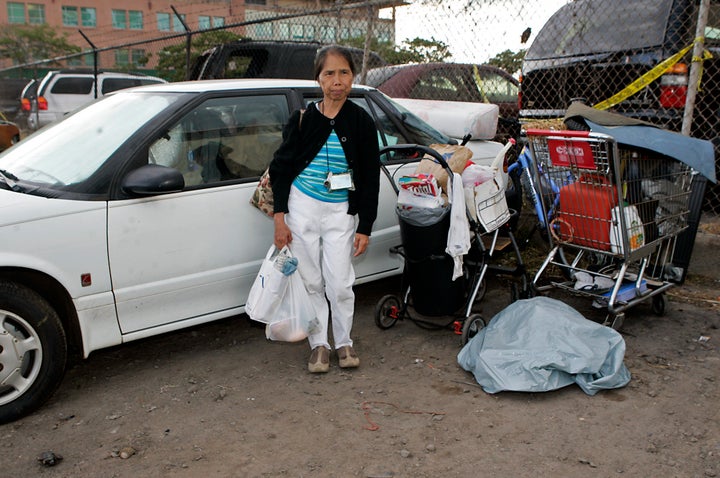
The number of homeless people on America's streets is morally indefensible -- over 600,000 on any given night -- but even more startling is how little we have historically known about this population. If solving a problem depends on first understanding it, it should come as little surprise that solutions to homelessness have often been slow.
Thankfully, that reality has changed rapidly over the last year, as more than 2,000 Americans have gone to the streets of their communities to add a crucial level of detail to what we know about our homeless neighbors. These volunteers are part of local teams implementing the 100,000 Homes Campaign, a groundbreaking effort that is transforming the way communities see and respond to homelessness.
Since the Campaign's launch one year ago, volunteers from more than 30 cities have canvassed their neighborhoods block by block in the early hours of the morning. Together, they have sought out and surveyed the homeless people living among them, asking them critical questions about their health and social histories. The results of this massive data-gathering project have already revealed a new level of specificity that has helped communities recognize homelessness as an urgent public health issue and match homeless individuals with housing and health services at an accelerated rate. If the Campaign's experience proves anything, it is that the more communities know about who specifically is homeless, the easier it is to find a lasting solution.
An initiative of Community Solutions, a national not-for-profit organization, the 100,000 Homes Campaign aims to find permanent housing for 100,000 of the most vulnerable and long-term homeless individuals and families in America by July of 2013. At the start of its second year, the Campaign's 87 member communities have already moved 10,569 homeless people into permanent housing across the United States. With new communities joining every month, the Campaign is squarely on track to meet its goal.
So far, Campaign volunteers have administered more than 19,000 surveys, amassing a more detailed picture of the most vulnerable homeless people on our streets than has ever before been available. Here are some highlights:
- 43.9% face at least one health condition that puts them at serious risk of dying on the streets;
- 45% experience mental illness;
- 32.1% reported a dual diagnosis of mental illness and substance abuse;
- 22.1% are tri-morbid, meaning they live with mental illness, substance abuse, and a chronic health condition;
- 11.8% have visited an emergency room three times or more in the last three months;
- 38.9% have no insurance, including Medicaid and veteran's benefits.
The survey that underlies this data is called the Vulnerability Index. It's a questionnaire that captures data on the age, health status, institutional history (military, hospital, jail, and prison), length of homelessness, patterns of shelter use, and previous housing situations of homeless people in Campaign communities. Based on leading medical research by Dr. Jim O'Connell of Harvard University and Dr. Stephen Hwang of the University of Toronto, it identifies those individuals experiencing the health conditions associated with increased risk of death in the homeless population, including HIV/AIDS, kidney disease, and liver disease.
But the Vulnerability Index is much more than a medical questionnaire -- in communities across the country, it has become a powerful community organizing tool that reveals homelessness for what it is: an urgent public health emergency. By putting names and faces to their homeless population, local teams have been able to identify and focus on the most at-risk, prioritizing them for housing and supportive services first. The result has been a marked acceleration in the rate at which Campaign communities are moving people off the streets for good.
Among cities with over 1,000 chronic or unsheltered homeless people, for instance, New Orleans leads all communities with an average of 62.4 homeless people housed per month. Washington, DC is next at 38.8 people per month, followed by San Francisco (29 people per month), Los Angeles County (28.3) and Atlanta (28).
Among communities with fewer than 1,000 chronic or unsheltered homeless people, the city with the best rate of housing placements is Philadelphia (10.7 people per month), followed by Chicago (9.1), Columbus (7.5), Detroit (7.5), and Omaha (7.4).
Permanent supportive housing saves money for communities, as formerly homeless people begin to replace hospital and emergency room use with primary and preventive care. Reducing the burden on jails, shelters, and local social service sites reduces the high public costs of those systems. Dozens of studies bear out the counter-intuitive fact that it costs far less to help someone out of homelessness for good than to do nothing. At a time of unprecedented strain on local budgets, ending homelessness makes clear financial sense for strapped communities
To learn more about the 100,000 Homes Campaign, or to see if your community is among the 87 already participating, visit 100khomes.org.